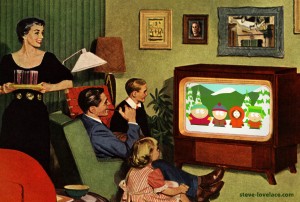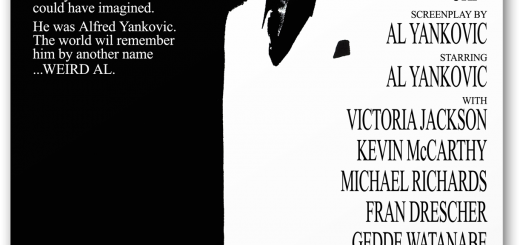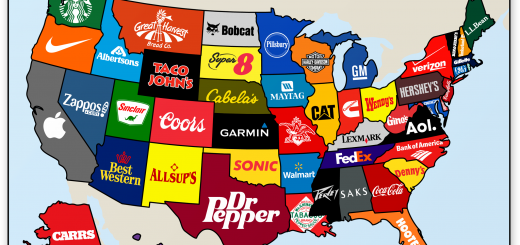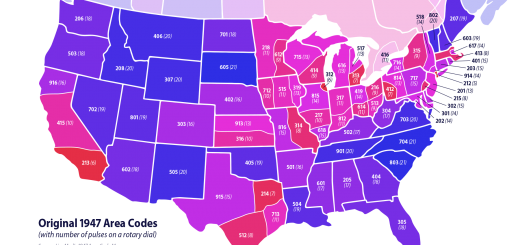Television Inflation
 When it comes to currency, the more you print, the less it’s worth. This is a basic law of economics, and it doesn’t just apply to the money supply. If there are only three widgets in the world, each one is worth a lot. If there are thousands, the value of each widget drops. The same can be said for TV shows. As the number of TV shows has increased over the years, the value of each show has gone down. I call this “television inflation”, and its not just some abstract macroeconomic idea. It’s a rational explanation for why there’s so much crap on TV. Let’s take a look decade by decade.
When it comes to currency, the more you print, the less it’s worth. This is a basic law of economics, and it doesn’t just apply to the money supply. If there are only three widgets in the world, each one is worth a lot. If there are thousands, the value of each widget drops. The same can be said for TV shows. As the number of TV shows has increased over the years, the value of each show has gone down. I call this “television inflation”, and its not just some abstract macroeconomic idea. It’s a rational explanation for why there’s so much crap on TV. Let’s take a look decade by decade.
Decade by Decade
1970s
In the 1970s, there were only three networks (four if you count PBS). There were a few independent stations here or there, but they mostly played reruns. VCRs had yet to catch on, so if you wanted to watch TV, this was it.
1980s
Cable TV became popular in the 1980s. and we soon had thirty or forty channels on TV. But the number of people working in the television industry did not increase tenfold. Instead we got a lot more reruns. And it wasn’t just Nick at Nite playing reruns of “I Love Lucy”. Even the channels with original content played on a loop. MTV played the same hits over and over. Headline News played the same half-hour news show over and over for six hours. And while early cable was dominated by reruns, they were good reruns. Because cable was so new, networks like Nick at Nite and TBS were able to pick the best shows to replay. Likewise, Headline News could make a well-researched, concise news program, since they were only making a few programs a day.
1990s
In the 1990s, the number of channels continued to grow. Flush with cash from 80s reruns, cable networks expanded their original programming. Here we start to see the first hints of television inflation. MTV was a pioneer in this regard, coming out with “The Real World”, widely regarded as the first reality shows. Another leader was Fox, the fourth broadcast network. Their un-narrated documentary series “Cops” set a tone that would blur the line between reality show and documentary. Finally, in the 1990s, the number of reruns continued to increase as well, as channels like TBS and TNT started running “marathons” of shows and movies on weekends and holidays.
2000s
The new millennium heralded the dawn of reality shows: contests like “Survivor”, talent shows like “American Idol” and game shows like “Who Wants to Be a Millionaire?” And thanks to digital cable, the number of stations exploded. Now there was an MTV 2, a History International and increasingly specialized networks like Animal Planet and Cartoon Network. CNN, once the only game in town for 24-hour news, had to compete against MSNBC and Fox News. This meant that CNN’s Headline News couldn’t play the same half hour over and over. They had to fill every minute of airtime with original content. This led to a rapid increase in talking heads and pundits. They filled the time between the news stories with analysis. Gone were the days when you could tune in for 15 minutes and catch the day’s headlines. With more analysis and punditry, the value each broadcast minute decreased, like dollars in a hyperinflation.
2010s
Today there are an uncountable number of TV channels. Even broadcast television, since the digital switchover, allows local TV stations to broadcast multiple feeds. And that doesn’t even count YouTube, Hulu, Netflix and pirating. With so many outlets, it’s hard to attract a big audience to anything. As the number of people making TV shows has increased, the number of people watching any one show has plummeted. This leads to scenarios such as the dumbing down of the History Channel. Well-researched documentaries cost a lot and attract a small audience of history nerds (like me). It’s cheaper to film a truck driver or a pawn shop owner doing day-to-day work, and edit it to make it more dramatic. Not only is this kind of show cheap to make, it attracts wider audiences than more high-brow programming.
The Future of Television
Like beer or music or any number of industries, television is turning into a Long Tail market. In the future, you’ll have even more shows with even smaller audiences. As this happens, we’ll see two kinds of shows: cheap mass-produced series that fill airtime with unscripted chatter, and niche shows made for fans by fans, paid for with donations and direct payments (Louis CK’s $5 standup video comes to mind.) As for big-budget scripted entertainment, you’re going to see an ever-blurring line between TV and film. The few scripted shows left will borrow more and more heavily from the Hollywood traditions.
Entertainment changes with time, but its comforting to remember that there’s something for everyone. If you don’t like reality shows, you don’t have to watch them. And if there’s truly nothing on TV that you want to watch, get out there and make something you can deem worthwhile. Thanks to the Long Tail Market and the Internet, you can make whatever you want. Somebody out there will watch it.








13 Responses
[…] ’89, but modern entertainment seems to have caught up, featuring more low-budget unscripted TV shows. For better or worse, I see a Weird Al influence on modern TV, enough that I can argue that […]
[…] are plenty of other stories that fizzle out in Act III. What movies, books and/or TV shows disappointed you the most? Let me know in the comment […]
[…] The problem is that the “Making Of” film is planned from the offset. Movie and television studios make a lot of money off of DVDs and BluRays, so nowadays they film the documentary right […]
[…] if I watch TV?” I […]
[…] grew up watching PBS. I loved Sesame Street and Mister Rogers. When I got older, we got cable TV, and I started watching documentaries on the History Channel, A&E, the Discovery Channel and […]
[…] It didn’t eliminate my double vision, but it helped me focus. Imagine sitting in front of two TVs of equal size and volume. At first it’s a mess, but with a little concentration, you can […]
[…] a couple of weeks, you could tune in again and not feel lost. But this isn’t how people watch television anymore. Nowadays, people DVR, stream and download TV series. In the 21st century, we […]
[…] Colbert Report is unique on television. Based on the simple gimmick of a liberal pretending to be a conservative, it’s the kind of […]
[…] talk about the Treaty of Brest-Litovsk. Most people would rather discuss Game of Thrones or the latest celebrity gossip than a century-old pact between dying European empires. I can’t say I blame them, but the […]
[…] channel and get a million followers. Meanwhile, TV studios run dozens of cable channels with low budget shows that have a small, but profitable audience. This leads to media fragmentation. It means that my […]
[…] There is a downside to watching World War I play out week by week. Watching the events unfold in real time, you lose perspective of the big picture. Thankfully, “The Great War” has you covered. In addition to the weekly videos, they make topic-based videos: in depth looks about specific battles, countries and people. So if you want to learn more about what J.R.R. Tolkien did in the war, you can find out. They also do a series of Q&A videos. Called “Out of the Trenches”, these videos are much more casual, with the host, Indy Neidell, cracking jokes and being silly. But despite the silliness, “The Great War” never strays from its intellectual roots. There is thankfully no hint of the reality show components you find on cable TV. […]
[…] Lovelace, S. 2012, Television Inflation, viewed 10 October 2017, < http://steve-lovelace.com/television-inflation/>. […]
[…] like people the 1980s and 1990s were very genre conscious, more so than today. It was a big deal on MTV when Aerosmith and Run DMC did a collaboration, as there was very little crossover appeal between […]